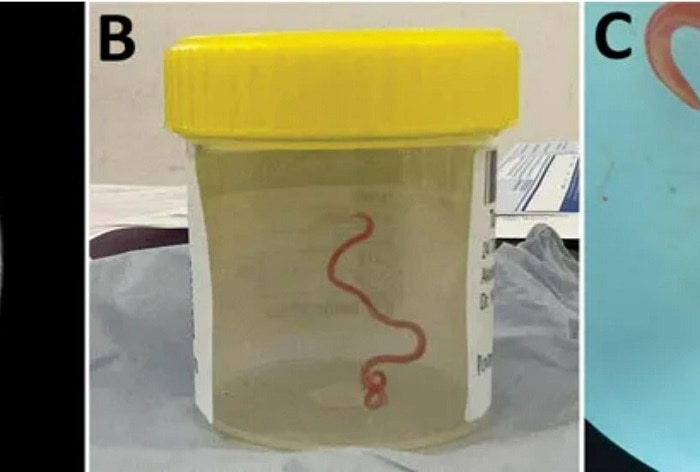Speculation suggests that the worm’s eggs could have been inadvertently ingested through edible grasses, like New Zealand spinach, collected for cooking.
Canberra: A live parasitic worm has been found inside the brain of a 64-year-old Australian woman, marking the first case of the infection in humans. The discovery was made by doctors and researchers at the Australian National University (ANU) and Canberra Hospital after they found a live 8 cm (3.15 inches) roundworm in the woman. The doctors were shocked to find the Ophidascaris robertsi roundworm, “alive and wriggling” in her brain, as previously the parasite had been known to inhabit carpet python snakes and kangaroos. The worm’s larvae were also suspected to have infected the woman’s other organs such as her lungs and liver.
This 64-year-old woman from England, residing in New South Wales, Australia, was hospitalized in January 2021 due to abdominal pain, diarrhea, a persistent dry cough, and night sweats. Her condition progressed, adding forgetfulness and depression to her symptoms by 2022, prompting her referral to Canberra Hospital.
Doctors believe that, after hatching within her body, the larvae made their way to her brain. This migration could have been influenced by the immunosuppressive medication she was taking, which compromised her immune system.
“This is the first-ever human case of Ophidascaris to be described in the world,” Sanjaya Senanayake, an expert on infectious diseases at the ANU and Canberra Hospital said in a statement. “To our knowledge, this is also the first case to involve the brain of any mammalian species, human or otherwise.
“Normally the larvae from the roundworm are found in small mammals and marsupials, which are eaten by the python, allowing the life cycle to complete itself in the snake.”
Speculation suggests that the worm’s eggs could have been inadvertently ingested through edible grasses, like New Zealand spinach, collected for cooking.
This particular type of worm is typically associated with snakes, particularly carpet pythons native to regions like Australia, Indonesia, and Papua New Guinea. While the infection doesn’t transmit between humans, it does underscore the growing trend of diseases originating in wildlife making their way into human populations.
The findings were published in the journal Emerging Infectious Diseases.
As per the US Centres for Disease Control and Prevention, more than 6 out of every 10 known infectious diseases in people can be spread from animals. It added that three out of every four new or emerging infectious diseases in people come from animals.
Published Date: August 29, 2023 1:06 PM IST
–>
–>


